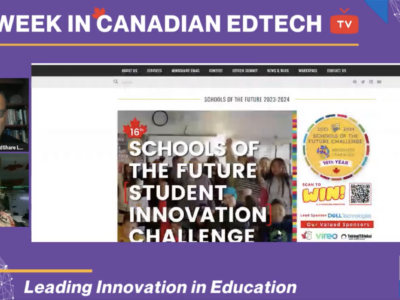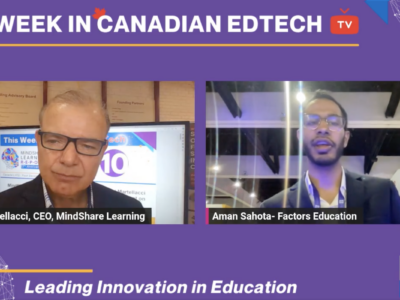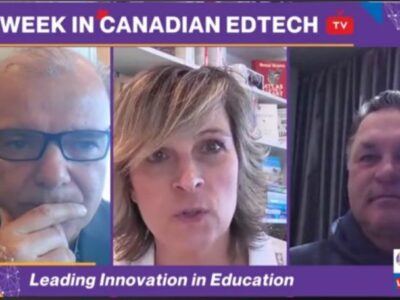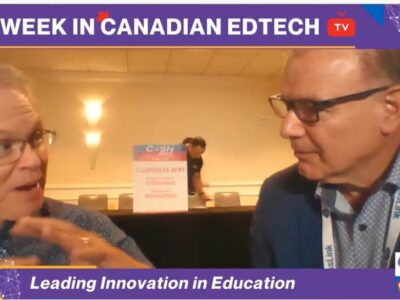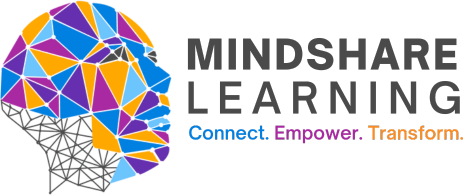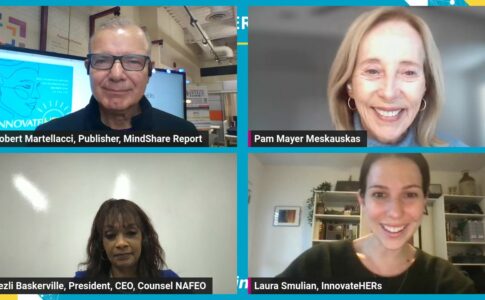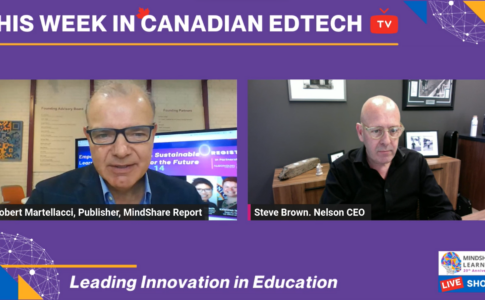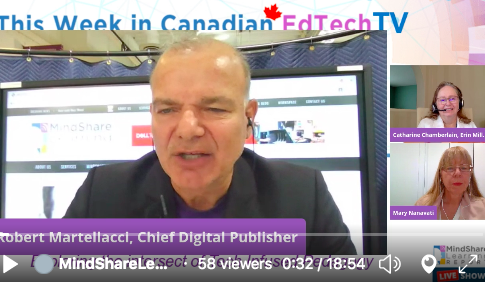Congratulations on your most recent book Blended.
1. What inspired it? What is the market penetration of Blended Learning?
Ever since Disrupting Class came out, we set about at the Clayton Christensen Institute to research and write about how online learning was growing within K-12 public schools–and it was evident that the majority of it was in schooling environments, not in distance ones. Increasingly people called this blended learning, but people meant different things when they used the term. So we defined it for the field in our research and continued dig into the phenomenon, but our real passion for blended learning is not to employ it for its own sake, but to use it to transform our education system into a student-centered one that serves each and every student well. Our work on innovation and all that we were learning by working with early innovators in the field meant that we felt we had a lot to offer educators who were seeking to leverage blended learning by helping them design environments that could really take advantage of all it has to offer. So that desire to support educators in serving all students well was really what motivated us.
Blended learning itself is growing really rapidly, which makes this work have some urgency. My estimate is that over 9 million students in the U.S. are experiencing blended learning for at least some part of their day now in K-12 schools.
2. Blended Learning is ( I did my Masters in EdTech at Pepperdine U via this mode 85% online 15% f2f…) as a subset of online learning is often misunderstood. How would you define it?
We define it differently from the definition that has dominated higher ed–primarily because we were defining blended learning for a K-12 audience where schools play a really important custodial role and online learning is used differently. For example, many full-time virtual schools that serve kindergarteners deliver a large part of the curriculum offline with parents, but no one would call that blended learning in the K-12 arena, yet in the higher ed definition of blended learning, that would count because over 15% of the learning would be offline with a face-to-face person. For the definition of K-12 blended learning, we worked with well over 100 educators and 100 programs that people called blended to derive the definition. It is:
A formal education program in which a student learns:
(1) at least in part through online learning, with some element of student control over time, place, path, and/or pace;
(2) at least in part in a supervised brick-and-mortar location away from home;
(3) and the modalities along each student’s learning path within a course or subject are connected to provide an integrated learning experience.
3. Let’s talk about the notion of Distrupting Class… one of your previous books. A powerful title, yet again, not clearly understood. What is it about education and the challenge around innovation? Are you optimistic about the future of learning?
The title was intentionally provocative to hit on lots of the challenges education faces. The point within the context of blended learning is that online learning is growing as a disruptive force in education. We can use it to disrupt the classroom as we know it–which was built to standardize teaching–to create new learning environments that are able to personalize for each and every student’s distinct learning needs to help every child realize their fullest potential. I am very optimistic about the future of learning as I see educators innovating with the new tools at their disposal every day and the technology improving measurably every year.
4. I once interviewed a CEO of one of the top LMS companies who informed me that they were no longer an LMS company but a learning platform. Did he confuse the market by making the switch? What do you see in the future for the LMS players and educators teaching online? What platforms do you see emerging?
It’s interesting you had that experience. It signals a broader trend in the market. I really think LMS companies have been mislabeled from the get-go; they’ve really been course management systems and not all that focused on the learning itself. I do think a big shift is materializing where LMS players and many others are trying to move to be the learning platform–the hub or director of all learning activities–hence the rhetoric you heard. They are trying to be the place students consume content, measure engagement and learning from that content–so they have to have assessments–and then even help nudge students to the right next learning experience through adaptive learning techniques, for example. Some of those competing to be that platform range from the usual LMS suspects to folks like Knewton and even Khan Academy. I think you’ll have some others–like Intellus Learning or Osmosis–that people are less familiar with that do something here, too. And then you’ll have platforms like Fidelis Education, where I’m a board member, that pioneer new categories like the Learning Relationship Management (LRM) system that really focus on creating a team around a learner to support them to and through their learning and career goals.
5. Can we expect an accelerated shift to online and blended in higher ed? What about the K12 space?
I think that accelerated shift is happening. Face-to-face enrollments are stagnant or declining at most places in higher ed; fully online learning continues to increase fast and blended learning is increasing even faster. The blending of K-12 is happening as well. I think we’ll continue to see that grow faster in the years ahead in an absolute sense.
6. Which academic institutions are leading the way in Blended Learning in higher ed? What about in K12? And what are the key drivers to embracing it?
If you look anywhere from ASU to the UNC system to the bootcamps that aren’t traditional higher ed providers, you see lots of blended learning in higher ed. In K-12 there’s more of a systematic focus as the custodial element is so critical, and so you see lots of districts–like Washington, DC and Fulton County–and charter school networks–like Summit Public Schools and Rocketship–pioneering the future of learning in blended environments.
7. Where do you see Blended Learning in 2020?
I think most students at all levels will have part of their learning experience in a blended environment by 2020. Maybe we’ll stop calling it blended learning at that point and just call it blended! The real question I think is are we using that transformation to create a more student-centered education system–that is, one where we personalize learning for students and the system is competency-based such that students move on upon mastery. I’m optimistic, but I don’t know think we’ll have that all done by 2020.
Thanks again for your support on this. Best! R.

